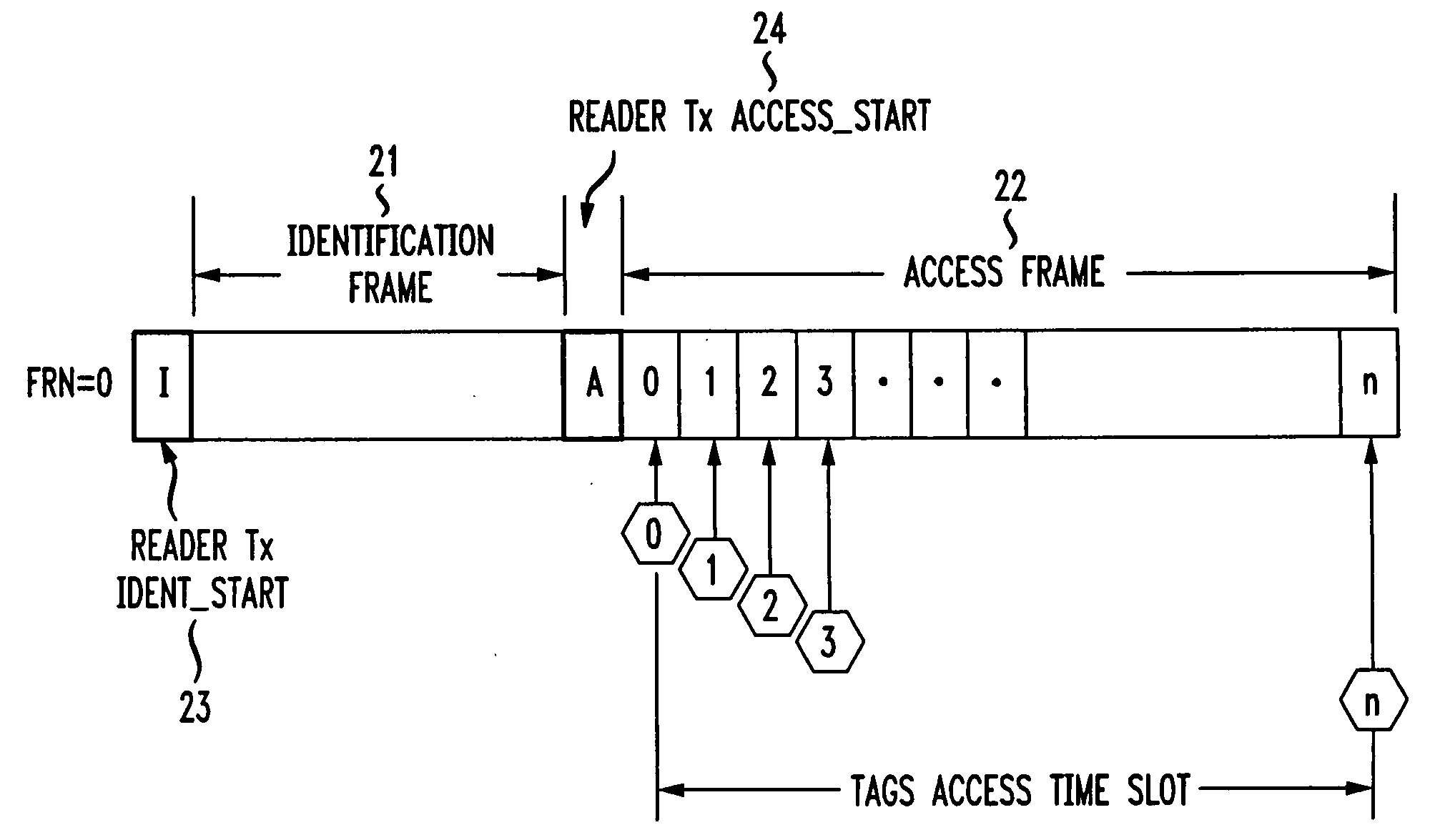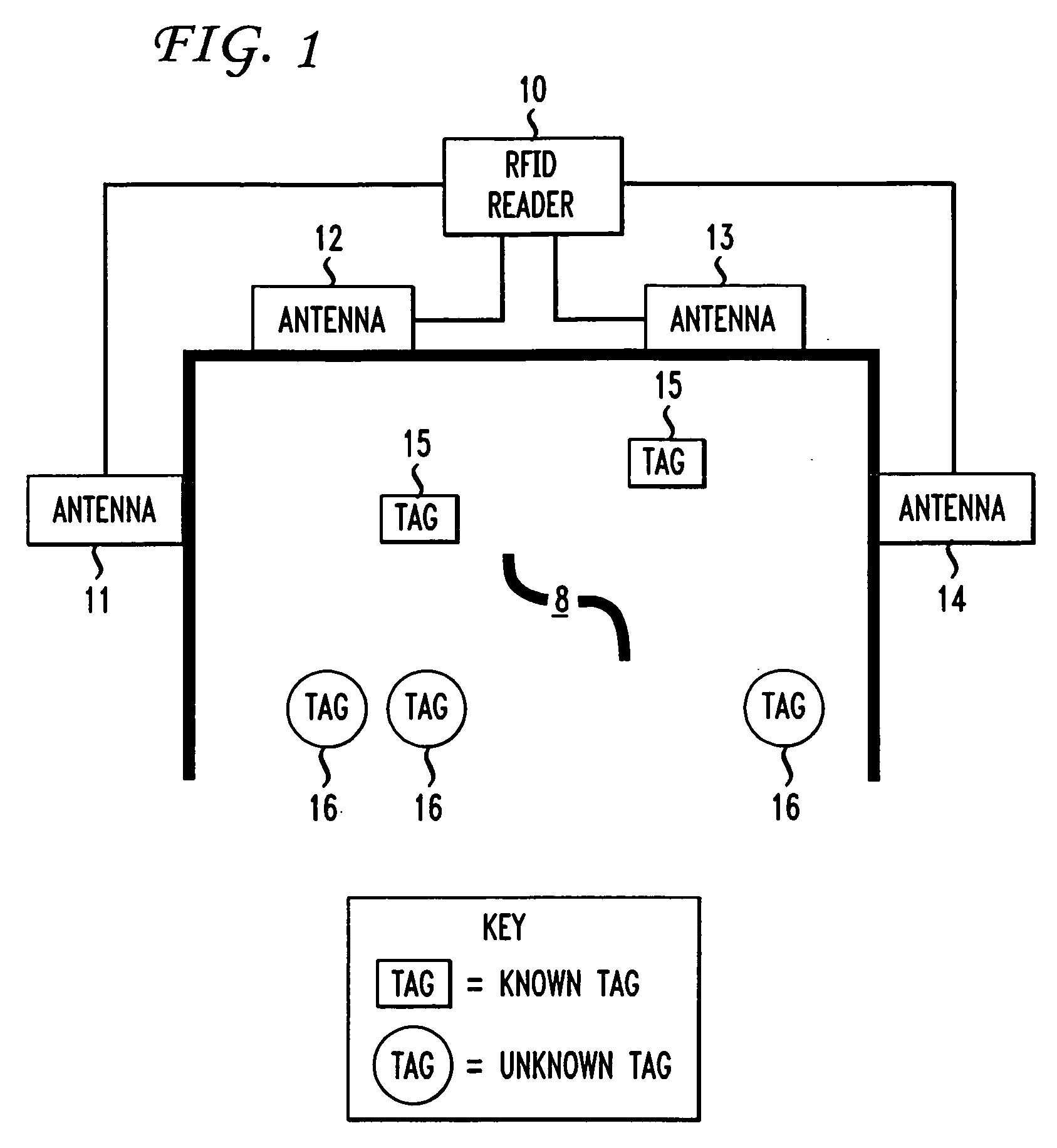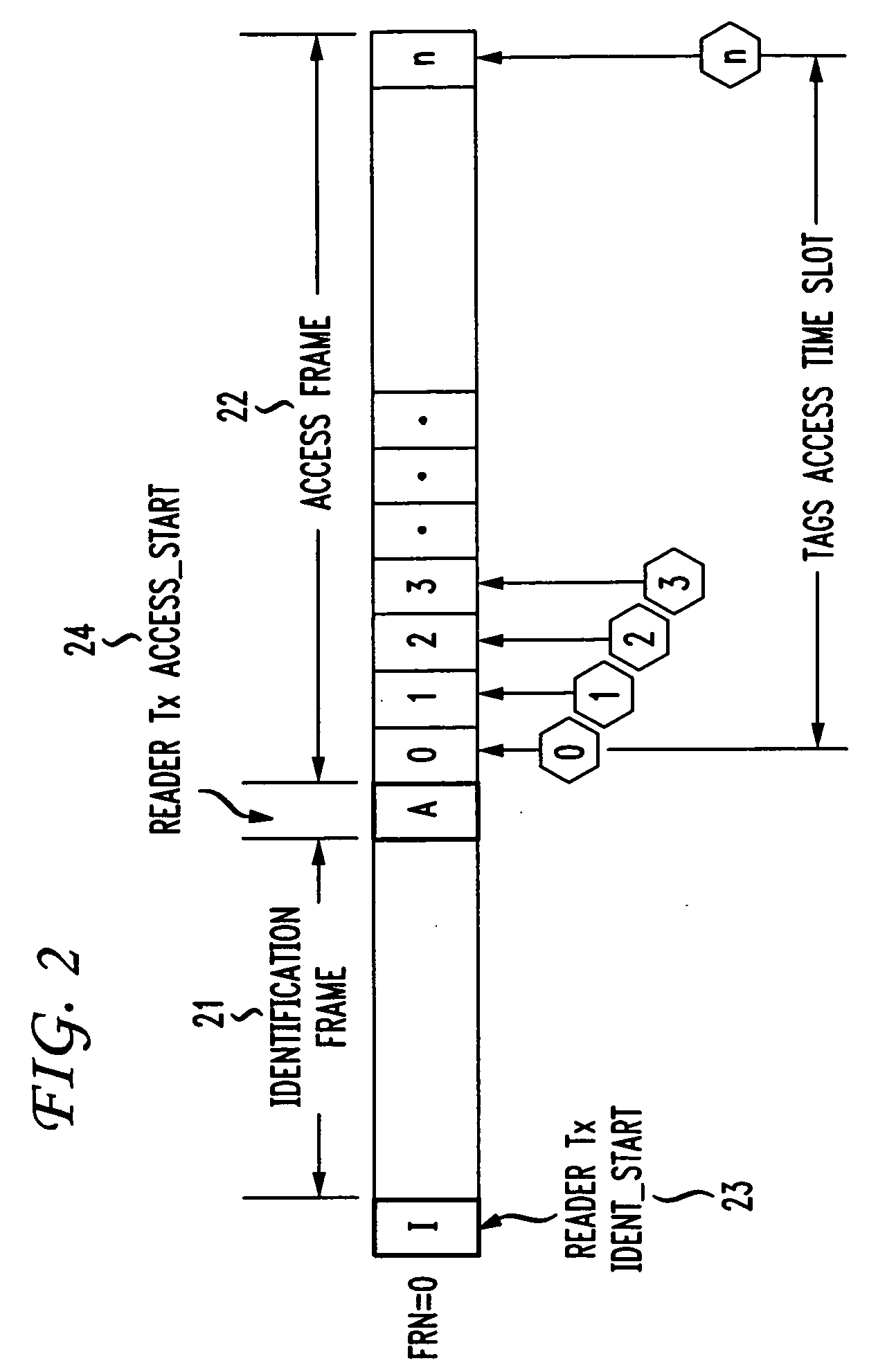Collision resolution protocol for mobile RFID tag identifiaction
a technology of collision resolution and mobile rfid, which is applied in the field of radio frequency identification (rfid), can solve problems such as difficult selection of bin slots, tag collision problems, and inability to avoid collisions during communication between a reader and multiple tags, and achieve the effect of improving the identification process of tags
- Summary
- Abstract
- Description
- Claims
- Application Information
AI Technical Summary
Benefits of technology
Problems solved by technology
Method used
Image
Examples
Embodiment Construction
[0015]FIG. 1 shows a radio frequency identification, or RFID, system in which the present invention is illustratively implemented. RFID reader 10 uses multiple antennas 11, 12, 13 and 14 to detect signals from RFID tags 15 and 16 within an area 8, such as the area in the vicinity of a loading dock. Area 8 is hereinafter referred to as the reader's interrogation zone—this being a zone within which signals generated by the tags are detectable by the reader. The invention is equally applicable to environments in which there are multiple readers and tags traverse multiple interrogation zones. In warehouse environments, for example, the locations of items are tracked through an array of RFID readers.
[0016]Tags 15 are assumed to have been in interrogation zone 8 for some period of time in the past and have already been identified by reader 10 as being in interrogation zone 8. These are referred to herein as “known tags.” Tags 16 are assumed to have entered interrogation zone 8 since the l...
PUM
 Login to View More
Login to View More Abstract
Description
Claims
Application Information
 Login to View More
Login to View More - R&D
- Intellectual Property
- Life Sciences
- Materials
- Tech Scout
- Unparalleled Data Quality
- Higher Quality Content
- 60% Fewer Hallucinations
Browse by: Latest US Patents, China's latest patents, Technical Efficacy Thesaurus, Application Domain, Technology Topic, Popular Technical Reports.
© 2025 PatSnap. All rights reserved.Legal|Privacy policy|Modern Slavery Act Transparency Statement|Sitemap|About US| Contact US: help@patsnap.com



